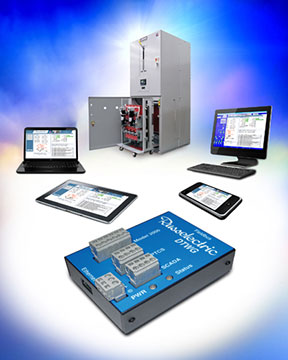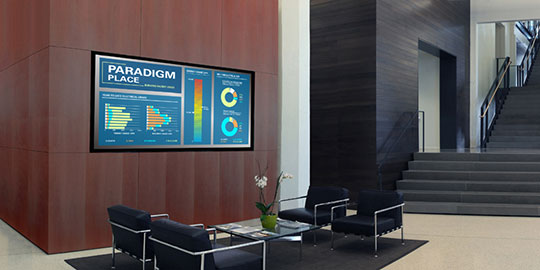| FM Strategies & Solutions from Building Operating Management |
To display this email with images, view online. |
 |
|||||||||
To perform the functions for which they are designed — to transfer electrical loads between power sources — transfer switches must monitor the quality of utility (or alternative source) power. So, if you use transfer switches to improve power reliability, why not use them to collect information that can be used to improve energy efficiency as well? The Russelectric RPTCS Automatic Transfer Switch Control turns Russelectric transfer switches into energy monitoring data collection points, and the Russelectric DTWG Communications Gateway feeds this data from the RPTCS to a SCADA, BAS, or other building energy monitoring systems. To sense power problems, the Russelectric RPTCS ATS Control continuously monitors and records voltage (phase-to-phase and phase-to-neutral) and frequency of both normal and emergency sources. Metering of current, power, and power quality are also available. The control can also meter and log phase and neutral current; percent of unbalanced current; percent of unbalanced voltage; accumulated energy (KWH, KVAH, and KVARH); and per phase and 3-phase totals for real power (KW), apparent power (KVA), reactive power (KVAR), and power factor. With an optional Russelectric DTWG Web Communications Gateway, this information can be accessed remotely from any Java-capable, web-enabled or wireless device. The information can also be fed to a SCADA, building automation, or central control system. This data can be compared with utility bills to verify their accuracy or uncover discrepancies; analyzed for possible energy efficiency improvements such as optimizing lighting, HVAC systems, or other electrical systems; or used to formulate energy saving strategies such as peak shaving. Download Up to 30 Days of Data for Historical and Trend Analysis
The Russelectric DTWG stores up to 30 days of historical data which can be easily downloaded to analyze power usage and trends, power reliability, and power quality of the monitored facility load. The data can be used to identify historical and real-time trends in energy usage as well as opportunities for energy savings. In many cases, this power data will offer enough detail to allow analysis by workshift, enabling both macro and micro power usage recommendations. Supports All Major Fieldbus NetworksAs standard, the Russelectric DTWG gateway supports Modbus-RTU through its serial ports. It can serve as a Modbus master and/or Modbus slave. With field-installable option modules, Russelectric can configure the DTWG for connectivity to the following networks:
Review Power System Status RemotelyIn addition to metered power values for both normal and emergency sources, the DTWG provides ATS, engine, and exerciser status; event logs; and historical trending, all displayed on a user-friendly dashboard that can be accessed remotely — anytime, day or night. The DTWG also provides e-mail alerts of power issues to assist personnel in correcting problems and better managing power usage. Review Event Logs to Diagnose Power ProblemsBy remotely reviewing events that took place prior to a power problem, facilities personnel can more quickly and accurately identify the nature and cause of the problem and institute procedures to prevent future occurrences. Create Schedules and Exercise ATS RemotelyThrough the DTWG gateway, users can establish schedules to exercise equipment or can initiate exercises manually from a remote location. For more information, click here. Russelectric |
|||||||||


